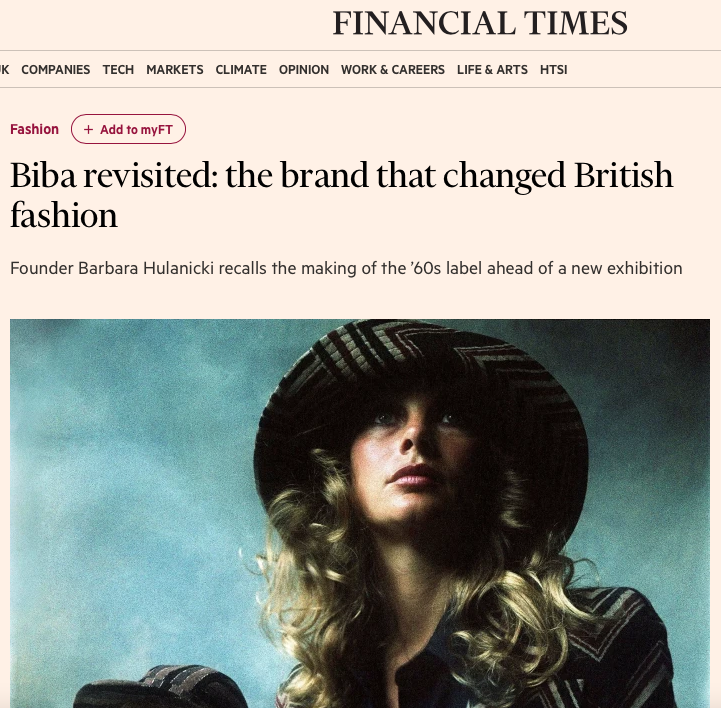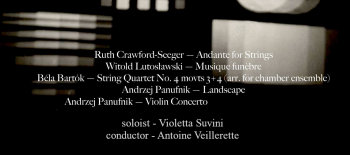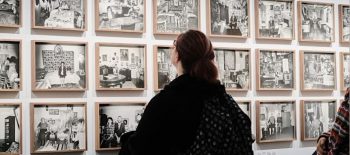‘The Brand that changed British Fashion’ – The Biba Story, 1964-1975 – Exhibition at the Fashion & Textile Museum
On until 8th September 2024.
Revisit the 1960s and the Brand that changed British Fashion – Discover the newest exhibition about Barbara Hulanicki’s world famous brand ‘Biba’ and its fashion designs and discover for yourself how Biba became the first lifestyle label, sparked a revolution in how people shopped and how it earned its spot as the fashion brand that epitomised the 1960s and 70s.
The exhibition is focused on the decade from 1964 – 1975, marking the year when the first Biba boutique opened, and 1975, when the legendary Big Biba closed its doors to the public. On display, are fantastic archival pieces of clothing, original photographs, film, and material all of which have been personally chosen by Barbara Hulanicki.
The exhibition is curated by Martin Pel, who also has authored, co-authored and edited four books including The Biba Years 1963 – 1974 (V&A Publishing, 2014). Pel also contrasts Biba’s 60s clothing with our contemporary understanding of fashion: people like to situate Biba within the idea that it was disposable fashion, [or] certainly fashion that was not [an] investment, but people are still wearing their Biba clothes.
‘It isn’t just selling dresses, it’s a whole way of life.’ – Barbara Hulanicki, 1970
Barbara Hulanicki was born in Poland and raised in Palestine, and later on in Brighton, UK. Fresh out of college and after gaining some industry experience, Hulanicki found herself in a new, post-war, independent London, where girls danced all night and wore whatever they wanted. And just like that Hulanicki opened her iconic shop, a Kensington’s swingiest emporium. And it proved to be a hit – on Saturdays, the line stretched along the high street, attracting customers of all ages, from teenagers to the Rolling Stones and Twiggy. Her other clients included Princess Anne and Brigitte Bardot.
Hulanicki was also appointed Officer of the Order of the British Empire (OBE) in the 2012 New Year Honours for her services to the fashion industry.
But what did the legendary Biba shop look like? It was a grand Art Deco building, primarily designed as a department store in the early 1903s. But it wasn’t only a shop – it was as well a restaurant and music venue with a roof garden; imagine it as an all-encompassing day & night experience! Perhaps for a contemporary customer it doesn’t sound that thrilling, but Biba’s store was truly a forerunner of modern fashion retail, providing space for the whole family (including a sofa waiting area) and a broad range of products, from clothing, through furniture, baby wear and cosmetics, for black skin as well.
Find out more about the exhibition and book your tickets HERE.
Read reviews of the exhibition and find out more in the following articles from the Financial Times, Evening Standard & The Guardian





